For the rulers of Europe "this first time" played a huge role and often turned out to be a determinant of whether the marriage would be happy and lasting.
Since the marriage of the rulers was not their private affair, its consummation was an event of state importance. Until the 18th century, in some European countries, including England, wedding guests were present during their wedding night to make sure that the newly married couple was capable of the sexual act and procreation (it should be added that the royal births were also devoid of intimacy, because government officials were present during them, but this is a completely different story).
Through the keyhole
Among the rulers who had to endure the presence of strangers during her first time was the Polish noblewoman Maryna Mniszech, who on May 18, 1605 married Tsar Dmitri, better known as Dmitri Samozwaniec.
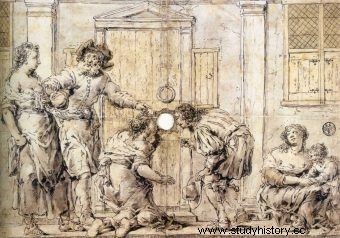
The wedding night at royal courts was rarely a private affair of the spouses.
After the marriage and coronation of Maryna, the decking ceremony took place - the solemn laying of the wife in her husband's bed. The young tsarist entered the bedroom in the presence of the boyars, then the bridesmaids laid her down in the matrimonial bed. Then Dimitri appeared in the room and lay down next to his wife. The boyars, however, stayed in the room to confirm the consummation of the marriage.
As this barbaric custom was common in Europe, neither the Polish woman nor her husband perceived voyeurism as a violation of their privacy when boyars lined up at their bedside. To create the illusion of intimacy, purple curtains are lowered around the bed. After the act of love, the groom loudly announced:"The marriage is over," and the guests left the bedroom of Maryna and Dmitri.
Unconsumed marriage
In the 18th century, the poor condition of roads and primitive means of transport did not encourage travel. Therefore, very often, when choosing a companion / school of life for princes and princesses, only a portrait of the future husband or wife was sufficient. Needless to say, these works did not always reflect the candidate's charm or lack thereof. When meeting face to face, the future spouses most often experienced cruel disappointment ...
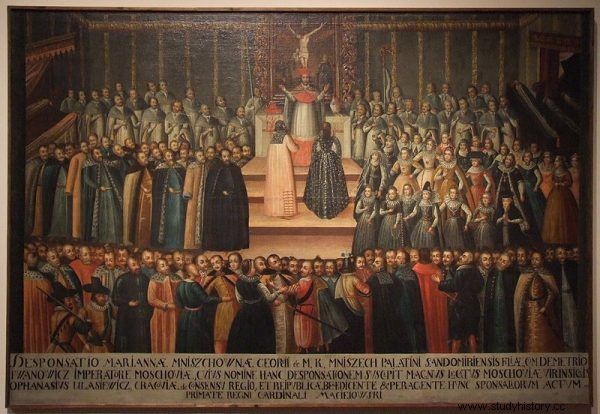
The wedding of Maryna Mniszech. After the wedding, the woman waited her wedding night in the company of boyars
The future Catherine II (1729-1796), princess Zofia Anhalt-Zerbst born in Szczecin, also encountered this method of matchmaking. In the early 1840s, the Russian Empress Elizabeth was looking for a wife for her nephew and heir to Peter. After seeing Zofia's portrait, she concluded that she was the right candidate. In 1744, the German princess and her mother came to St. Petersburg in 1744. After converting to Orthodoxy, Zofia took the name Katarzyna.
The young woman was disappointed to see her future husband. He was thin and frail, his figure lacking proportions, and his unsightly face flecked with smallpox marks. In addition, the prince had a delay in intellectual and emotional development. He also showed a complete lack of manners, as evidenced by the instruction on the Grand Duke's behavior at the table. It was necessary to make sure that Peter did not allow himself to use "unrefined and indecent jokes at the table, in the company of noble people" and did not pour liquids over the faces and clothes of those serving him.
On August 21, 1745, the wedding of Grand Duchess Catherine and Piotr took place, followed by the wedding night. The Tsarina Elizabeth and the ladies of the court took her to the bedroom, took off her clothes, helped her put on her nightgown and bathrobe, and left the room. At the same time, Piotr was changing in the next room.
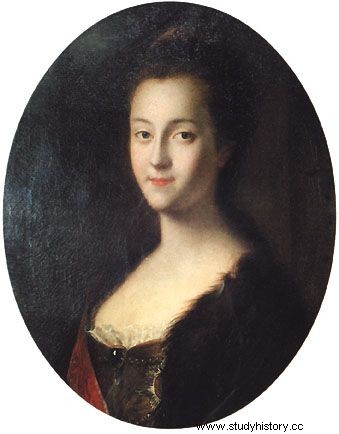
Catherine II was terrified of the wedding night ahead of her.
Mother told Katarzyna about marriage obligations and 16-year-old wife was trembling like aspen. She glanced fearfully at the door where her newly wedded husband would appear. It's been an hour or two. The Grand Duchess was concerned, as evidenced by the entries in her diary:“Should I get up? Do you stay in bed? I do not know." Finally, a maid knocked on the door and informed Katarzyna that her husband was enjoying the dinner he had ordered. When Piotr finally came to the bedroom, he was very drunk. He chuckled that his servant would like to see him in bed with his wife. Then he fell asleep.
It is not known whether the spouses consummated their 17-year marriage. Although Piotr is considered the father of their son Paweł, born in 1754, it is likely that he was fathered by Katarzyna's lover, Sergey Saltykov.
Bad pair
The Austrian Empress Elizabeth (1837-1898), better known as Sissi, got married when she was only 16 years old. Her husband Franciszek Józef was 24 years old and he was her cousin (their mothers were natural sisters). Sissi loved him but was too young and too scared to start an intimate life.
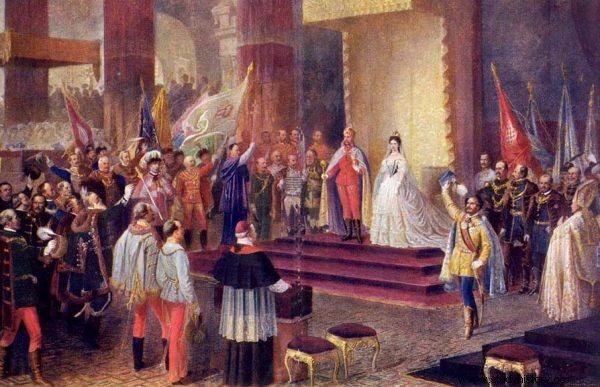
The coronation of Franz Joseph and Elizabeth as King and Queen of Hungary
After the wedding reception, the couple went to the bedroom. The next morning Elizabeth's mother took her to inquiries about the night before and found out that the marriage had not been consummated because Sissi was simply afraid. Franciszek Józef's mother had a similar conversation with her son. Soon the entire imperial palace knew that the emperor and Elizabeth had not yet become husband and wife. This did not happen until the third night, as all the courtiers also found out.
It must be said that the further intimate life of the couple was not successful. This is because Elizabeth's libido was very low; anyway, she had never liked the physical side of love and preferred to flirt. Bridget Hamman, the empress's biographer, maintains that the 9-year difference between the couple's third and fourth children is due to the lack of sexual contact between Sissi and Franz Josef.
Love and passion
The most successful first sexual experience happened to Queen Victoria and her beloved husband Albert. The British monarch is wrongly considered a prudish person. In fact, the woman was a passionate person, she loved carnal enjoyment and was an insatiable lover. But according to the Queen's firm belief, frolic in bed was only permissible after marriage and only with her own husband or wife.
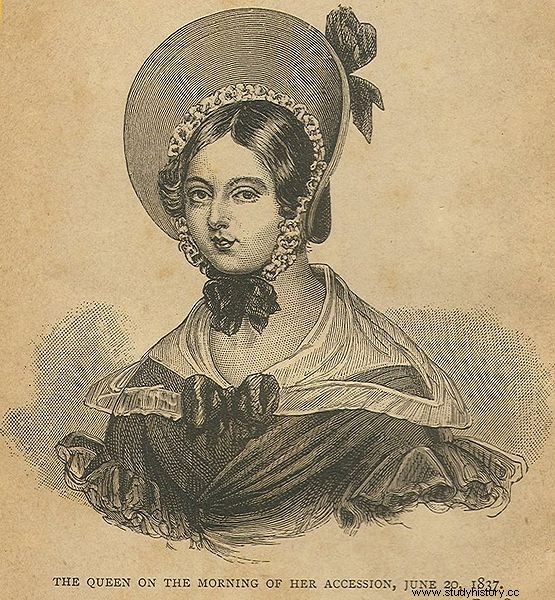
Queen Victoria was delighted with her wedding night
The love that unites the couple also contributed to a successful private life. Wiktoria was in love with her handsome and slim cousin Albert (he had wide shoulders and narrow hips). In her diary, the queen even made a detailed account of her first night with her husband. Unfortunately, these notes have not survived thanks to… the youngest daughter of Wiktoria - Beatrice, who was commissioned to edit the diaries of her deceased mother. Beatrice was so shocked by her mother's outbursts that she destroyed the pages in the diary they were on and then rewrote her mother's notes with her own hand.
There are, however, memories of Victoria's happiness after her first night. "Her emotions were obvious to all who saw her in the morning (...) her face beamed with happiness," writes the couple's biographer, David Duff. Moreover, the queen did not hide that she wanted to enjoy the time spent together with her beloved Albert and did not want to have children in the first years of marriage.
Bibliography:
- Duff D., Victoria and Albert. London:Tandem, 1973
- Hamman B., Empress Elizabeth. Warsaw:PIW, 2015
- Troyat H. Katarzyna the Great. Insatiable lust for life and power. Warsaw:Amber, 2016
- Wiernicka V., Polish women who ruled the Kremlin. Warsaw:Bellona, 2018
- Woodham-Smith C. Queen Victoria:Her Life and Times. London:Hamilton, 1972
